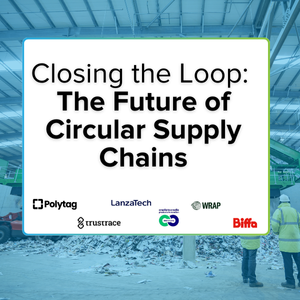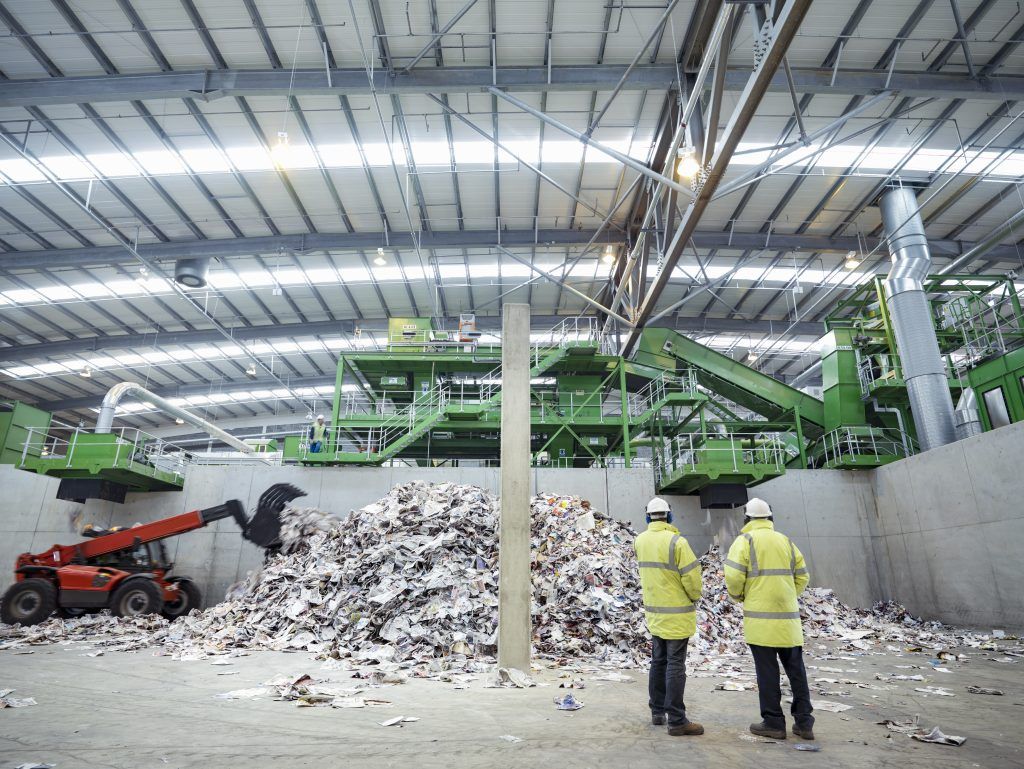Closing the Loop: The Future of Circular Supply Chains

How Consumer Goods Can Achieve True Circularity Beyond Recycling
As sustainability becomes a business imperative, and waste continues to accumulate in landfill, the production of materials used in consumer goods cannot continue its current trajectory. Novel materials are starting to enter the supply chain, and the question is clear: How will they impact current systems and infrastructure? Achieving true circularity means more than just recycling. It requires systemic change and deep collaboration across industries. The 5th Rethinking Materials summit in London on 13-14 May gathers leading voices from across the value chain to share insights on making circular supply chains a reality. Recent developments in U.S. trade and climate policy - including proposed tariff increases and a softening stance on environmental commitments - are adding fresh layers of complexity to already strained global supply chains. For global brands, the signals are clear: resilience and agility must be built into the system itself. Read on to hear from leaders at Lanzatech, Polytag, Wrap, Biffa, Trustrace and Cradle-to-Cradle as they work to close the loop.Defining Circularity & Its Urgency
The push toward circular supply chains vary across sectors, shaped by regulations, consumer expectations, and competitive pressures. While some companies are driven by cost and brand protection, others are motivated by environmental impact and compliance. Balancing these ambitions with profitability calls for a realistic assessment of current practices. For most, the journey will be incremental, starting small and evolving over time. However, some high-impact industries may need to invest in transformative solutions from the outset. Wrap, Director of Insights and Innovation, Claire Shrewsbury comments that “There is only so much that can be achieved through voluntary measures and in the current economic and trading environment.” She continues “Larger businesses may be able to absorb costs differentials in the short-term knowing that long term will be a benefit, but many SMEs are not able to do so unless there is a need or there is support. There is a need for a level playing field on what is required by businesses in term of circular supply chain models and circularity, and there is a need for impetus from policy and regulation to make this happen. Policy and regulation will also help decouple economic growth from resource consumption which the current linear model of society adopts.” Cradle-to-Cradle Director of Packaging, Charles van Reij, explains that “The key drivers are environmental regulations, brand protection and cost reduction / competitive advantage.” He adds, “Companies can balance circularity goals with profitability and operational efficiency by assessing how closely their current operations align with circular principles. Incremental changes are easier and less risky, but new investments may be necessary for deep transformations, particularly in high-impact industries.”Challenges & Barriers
Designing new materials to integrate seamlessly into existing waste systems is critical. Collaboration with waste management players becomes essential to overcome challenges, such as the treatment and inconsistent terminology surrounding bio-based and alternative materials. Biffa’s Waste Strategy & Packaging Manager, Roger Wright explains: “The biggest issue is the interchangeable use of different ‘bio-descriptions’, when they can mean very different things. We need a clear and consistent way to describe material properties and their behaviour in different circumstances, including but not exclusive to biodegradation and composability.” Trustrace CEO and Founder, Shameek Ghoush agrees. “A key obstacle is the lack of infrastructure built on verified, granular product data such as materials, treatments and origins, Digital Product Passports (DPPs) aim to solve this but aren’t yet scaled in force.”. He continues: “Circularity also requires a cultural shift. Without consumer education and systems that encourage responsible habits, renting, recommerce, and recycling won’t take hold. Brands must help create intuitive experiences that guide behaviour change and build a functioning circular economy.” Finally, he adds, “Traceability requires systems that map supply chains and collect real-time, verifiable data from raw materials to finished products. This data shift supports smarter decisions and stronger consumer trust through transparency.”Innovation & Materials
Emerging material innovations are playing a key role in advancing circularity, offering alternatives to traditional, linear resource use. Bio-based materials such as bioplastics, mycelium, algae-derived packaging, and hemp composites aim to minimise waste, reduce reliance on finite resources, and extend the usable life of materials. However, producing these new materials at scale remains a challenge. While they are often more expensive initially, costs can decrease with investment and demand. Competing materials must also meet or exceed the technical specifications of traditional materials, such as strength, durability, heat resistance, and flexibility. Lanza Tech’s Chief Sustainability Officer, Freya Burton comments that “Carbon capture and utilisation (CCU) technologies, like LanzaTech’s bio-fermentation process, convert emissions into valuable materials, transforming waste into new products. It can use municipal solid waste as a feedstock, tackling the challenge of hard-to-recycle materials. This not only reduces carbon footprints but also builds supply chains that continuously regenerate resources and extend product lifecycles. Likewise, it supports local economies by using regional waste and creating jobs along the supply chain.”Recycling & Composting Compatibility

Designing materials that fit into either compostable or recyclable cycles is central to scalable circularity. Mixed materials and multilayer composites are used for performance properties, but are notoriously hard to recycle due to costly, energy-intensive separation processes, many of which are not yet available at scale. Mono-materials (products made from a single material type) are key to simplifying waste management and improving reuse, recycling or composting efficiency. Roger Wright explores how Biffa has been addressing this challenge: “We’ve integrated bio-based PE plastics that are still compatible within traditional recycling waste streams but just happen to come from a non-oil-based source. Industrially compostable solutions have also been introduced into closed loop environments where the material is kept segregated and processed properly. Brands and manufacturers need to work harder to standardise their packaging and collaborate with other businesses that use (or could use) novel materials, to improve the yield of collected feedstock and create consistency at scale that then compels waste management to collect and process that material more effectively.” Cradle-to-Cradle’s Charles van Reij emphasises that “Material design is crucial to ensure recyclability and scalability. The Cradle-to-Cradle philosophy emphasizes end-of-life strategies, ensuring materials return to either biological (compostable) or technical (recyclable) cycles. Through pure, reusable materials, modular design, and closed-loop systems, it enables continuous regeneration rather than resource exhaustion.”
)
)
)
)
)
)
)
)
)